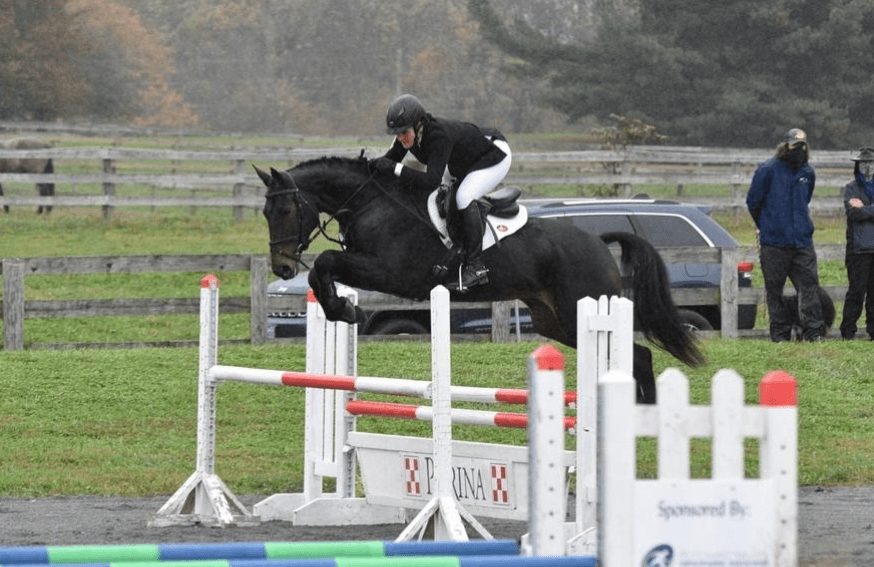“Slow is smooth, smooth is fast.” That was the mantra of Emily Harrington, the first woman and fourth person ever to free-climb El Capitan via the Golden Gate route in under 24 hours on November 4. It’s widely considered one of the hardest climbs in the world.
Now, horse riders may not be scaling a 3,000-foot-high granite edifice in Yosemite National Park, but we are scaling something, whether it be a long-term goal or a shorter-term challenge to reach the next level. So I think Emily’s mantra might be useful for us.
I like Harrington’s statement because it uses the transitive property. The transitive property states that if a=b and b=c, then a=c. Let’s take a simple example. If blueberries are berries and berries are fruit, then blueberries must be fruit. Blueberries are berries, berries are fruit. Thus, blueberries are fruit.
We can apply this same transitive property logic to Harrington’s mantra. Slow is smooth, smooth is fast. If slow is smooth and smooth is fast, then slow must be fast. Slow is fast.
 Photo courtesy Ema Klugman.
Photo courtesy Ema Klugman.
Is Harrington insane? Probably, if she spent the day of the federal election scaling El Capitan. But she also repeats to herself a contradictory yet entirely true statement: slow is fast. Slow is smooth and smooth is fast. Slow is fast.
No matter what discipline you do, whether it be jumpers or hunters or eventing or dressage, you have likely heard the idea that being smooth in the way you ride is hugely important. Smoothness often relies on keeping a consistent rhythm, staying in balance with your horse, and being confident about the task at hand. But how do we get to this place of being smooth? Incidentally, it’s normally achieved by going slow. Sometimes this means literally going slow—as in starting in walk to achieve seamlessness, then moving onto trot, and then canter. But it can also mean metaphorically slow—taking each task one step at a time and trusting that the building blocks, if put in place slowly and deliberately, will be that foundation you need to get to the next level and look smooth and confident doing it. It means not cutting corners in training, which may seem to get you to your destination sooner but really just mean that the holes will catch up to you when it matters.
Commentators often remark that the fastest riders in jump-offs actually look quite slow because they are amazingly smooth. Think of the jump-off rounds by winners like Beezie Madden and Kristen Vanderveen. In the sport of eventing, the fastest riders in the world (who, at the top level of the sport, have to gallop at about 25mph over an 11-minute course over about four miles) make the optimum time without ever appearing to be in a hurry. They are unbelievably smooth. They jump every jump out of stride. It looks slow, but it’s fast. It looks easy.
What we don’t see on those live streams are the thousands of hours these top riders are spending developing that smoothness. To be fast, they have to be smooth. Their horses have to be impeccably responsive. To be smooth, they have to be diligent.
Harrington’s words apply to us, but so might her sport itself—rock climbing. Specifically, free-climbing, which is the most difficult type of climbing. As the New York Times describes it:
“During a free-climb ascent, a climber goes up one pitch, then stops and is followed by a belayer, a person attached to the other end of the rope. If the climber falls, she returns to the bottom of the pitch and begins again.”
This strikes me as exactly what our training process is like. As riders, we go up “one pitch” (whether that be jumping a bigger jump or accomplishing some type of more difficult task) and our support team is like our belayer, always backing us. If we fall, we start at the bottom again. It’s sort of like a horse show—you can fall off in a class, but in the next class everyone starts at the bottom again.
Harrington described her ascent of El Capitan in an Instagram post, where she also explained that she had attempted the climb before and failed. At one point she writes:
“A nasty slip on the 13a Golden Desert pitch almost took my resolve – a deep gash on my forehead left me bloody and defeated. I pulled on again, part of me not really wanting to stay on the wall, the other part gathering courage and flow. I kept thinking “why am I still hanging on?”
There are points in our riding when we will think this—why am I still hanging on? Hanging onto a dream, to a horse, or to a sport that doesn’t seem to go our way and mostly just tries to bankrupt us. It may literally feel like an uphill battle, like climbing a rockface. But like Emily, we can gather courage and flow. There is a reason why we are still hanging on. Slow is smooth, smooth is fast.
